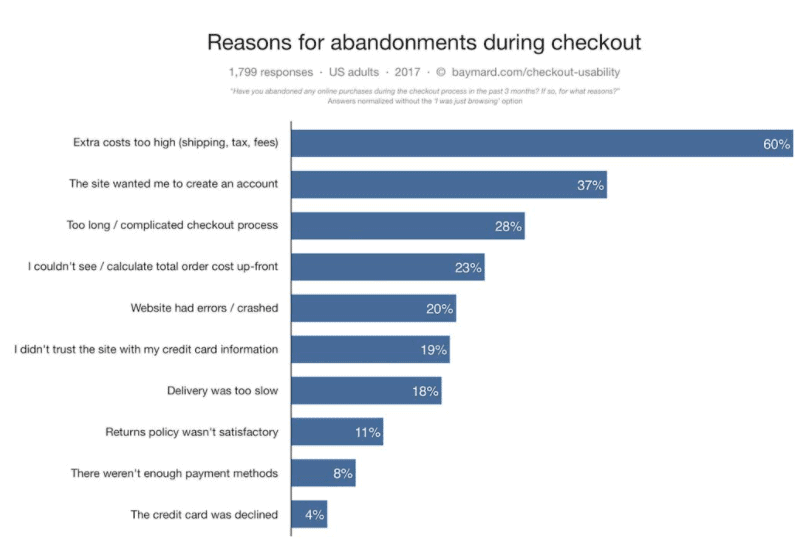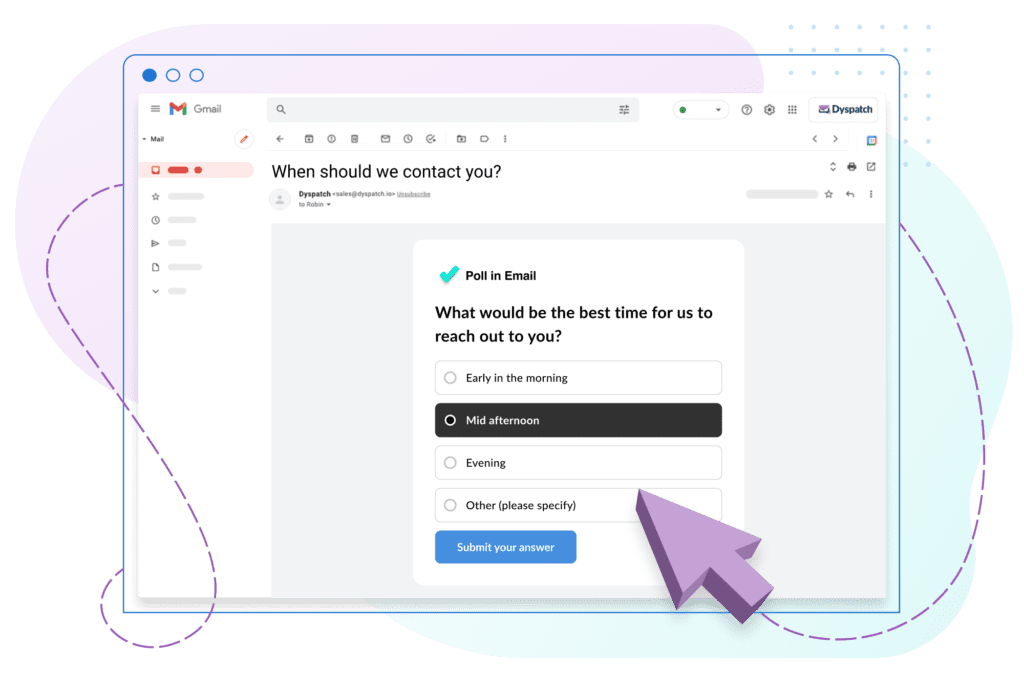Cart abandonment is a major problem for online retailers.
One multi-year study by Barilliance found that 78% of global e-commerce customers leave before completing their purchase. And this percentage has stayed largely stable over the years.
The good news is that there are several proven methods for getting those customers to return. Cart abandonment emails are particularly effective, with open rates between 40-46%, and conversion rates between 8-9% over the past five years.
And things are about to get a whole lot better. Recently, Google announced AMP for Email, a framework for implementing Accelerated Mobile Page (AMP) features on email messages. In other words, you can now make your emails look and function like a regular webpage. Some impressive test results have already come to light – Ecwid provides their merchants with the ability to send AMP powered abandoned cart emails and across 171,000 AMP emails, the average increase in recovered sales was 83%. Some merchants, like SalonXtensions saw their recovered sales increase by 300%!
AMP is going to be an absolute game changer for cart abandonment. To understand why, let’s take a look at the most common reasons people abandon their carts, and how AMP addresses them.
Top Reasons For Cart Abandonment
The Baymard Institute is the leading independent e-commerce UX research firm in the world, and has invested 54,000+ hours analyzing e-commerce sites with over 77,800 performance measures. Over the years, they have consistently found that most customers exit the checkout process for the same reasons:

For the most part, these reasons fall under three main categories:
1. Unexpected costs
This can include shipping, tax and other fees that the customer was not aware of before checkout. When these are finally calculated and added to the sticker price, customers may find that the overall cost is higher than what they’re willing to pay.
This can also erode trust in the brand, as some customers may feel that they’re being taken advantage of.
2. Complex checkout process
Many e-commerce sites require (or strongly encourage) customers to create an account before checking out. This is understandable as collecting customer information can be helpful for remarketing and upselling purposes. However, from the customer’s standpoint, this just adds complexity to the checkout process, and also invokes privacy concerns.
Other sites may not require an account registration, but ask for a large amount of information from customers before checkout. Not only is this inconvenient, it also increases the chances that customers will run into problems and give up.
3. Technical issues
These problems typically fall into one of three buckets.
IT or website-related issues in the checkout process can make it impossible for customers to complete their purchase, or require them to suffer through lengthy load screens or cumbersome troubleshooting before they’re finally able to checkout.
Payment-related issues can arise through overly stringent card verification processes, or fringe cases that set off red flags – such as when a customer is paying with an international card.
Human error occurs when the customer makes a mistake in the checkout process, and can’t complete the transaction. Most won’t stick around to figure out the solution – and who can blame them? These mistakes can usually be avoided with a clearer checkout flow or customer support.
Why AMP for Email is Different
Traditionally, e-commerce retailers would attempt to recover the purchase by sending the customer a cart abandonment email with a discount code.
This sometimes works, but in the long run, it’s nothing more than a band-aid solution. It might go some way to addressing issue #1, but does not help much with #2 or #3. In fact, you could argue that it makes things even more complex for the customer, as it requires the customer to click back to your site and re-orient themselves with the checkout flow. Additionally, offering discount codes every time a customer abandons a cart can condition customers to de-value your product.
In contrast, AMP emails can solve issues #2 and #3 by improving UX and streamlining the purchase process. And with some creativity, it can also allow you to solve issue #1 while simultaneously raising your product’s perceived value.
Here are five ways AMP can improve cart recovery:
Checking Out of the Inbox
AMP allows e-commerce brands to bring the entire checkout process directly into the email inbox. Rather than having to persuade the customer to re-visit your website’s checkout flow – which has already failed them once – you can instead offer a different, more direct path to a completed purchase.
Not only is this more user-friendly, it also ensures that you don’t have to fight an uphill battle against the customer’s psychology. One of the reasons it’s so hard to get the customer to revisit an abandoned checkout process is the consistency principle, which states that people prefer to remain congruent with their past behaviors.
If a customer has already opted out of your website’s checkout process, most won’t be inclined to change their minds just because you sent them an email. But by offering them an alternative process, you make it easy for them to justify a second try.

This fashion retailer allows customers to click through various product images in a carousel, zoom in on specific images, and even open product descriptions right in their email. They also include a support email address for those customers who are running into problems checking out.
Essentially, this email gives customers all the information they need to reaffirm their product choices and complete their order, without a detour to the main site.
This format can be even more effective when customers abandon their carts because a particular item is out of stock, or because they’re waiting for a sale on those items. For example, check out this email from Nest:

The headline establishes a sense of urgency as time is running out on the Black Friday promotion. With AMP, the headline can also be updated in real-time, as the clock ticks closer to midnight. So for instance, at 11pm, the headline might change to “Only 60 Minutes Left”, and start counting down minute by minute.
A customer making a last minute purchase would simply add items to their cart, pick the right quantity and color, and get a real-time update on exactly how much the order costs. Then, they’d click “proceed to checkout” and be directed to a confirmation page where they can approve their order. No muss, no fuss.
It might sound like a basic idea, but don’t underestimate the power of convenience. According to Ecwid, merchants who provide email checkouts recover an average of 15% of abandoned carts.
Deep Personalization
If you want your email to catch someone’s attention, make it all about them.
There are a wealth of studies showing that personalization works, and that the effect can be very large. For example, Accenture’s 2018 Personalization Pulse Check Survey found that 91% of consumers are more likely to shop with brands who provide relevant offers and recommendations. And research by Salesforce has proven that customers are 2.1x more likely to view personalized offers as important versus unimportant.
Of course, most retailers already use some form of personalization in their emails. But AMP takes this to a new level, by allowing customers to personalize their own products in the email itself.
For instance, check out this AMP email from a hotel booking site:

Reserving a hotel room is inherently an individualized experience. Not only do guests have to select a preferred location and room type, they also need to ensure the room is available on exactly the right dates.
Furthermore, availability changes over time. So a room that was available when the guest abandoned their cart might now be fully booked.
Thanks to AMP, this email is able to provide guests with real-time updates on how many rooms are left, and their available dates. This removes the need to go through the entire site-based checkout flow again, thus making the guest much likelier to complete the process.
While this is a fairly basic example, AMP enables much more granular levels of personalization as well:

In this email, customers have full control over the flavor, size and toppings of their pizza order. They’re able to see their pizza change within the email itself, and check the updated price before completing their order. This is especially handy in situations where customers may have changed their mind about what they want to eat since abandoning their initial order.
Answering Questions & Doubts
Uncertainty is a major driver of cart abandonment. Often, customers will leave the checkout process simply because they have some unresolved questions or lingering doubts.
AMP emails offer multiple ways to address uncertainty. If the customer has specific questions they need answers to, an FAQ might be the right answer:

This AMP email features a compact FAQ section organized in an accordion structure. This layout ensures that the email remains uncluttered, while conveniently addressing the most common questions asked by guests. For guests that need further assistance, the email also features a contact form built directly into one of the accordion drop-downs.
AMP even allows this concept to be taken one step further, by including support tickets with real-time updates, or live chat functionality in the email itself. Here’s an example of an email incorporating real-time comment updates from Google Drive:

Imagine being able to respond to customer questions in real-time, right in their inbox. Say goodbye to back-and-forth support emails and hello to high conversions.
Aside from specific questions, many customers will have general doubts about the value of a product. Social proof is a great way to reassure them that the product is worth it. 93% of consumers say that online reviews impact their purchase decisions, and that they’re willing to spend 31% more on a product with great reviews.
AMP’s layout features make it easy to showcase multiple relevant product reviews and endorsements, especially when combined with dynamic personalization:

Email “real estate” is not a problem here as the customer can just keep clicking for another review until they find one that is relevant and convincing for them. Never before has social proof been this easy.
Gamified Promo Codes
There is no doubt that promo codes work for cart recovery, but as mentioned above, they also de-value your product in the eyes of the customer.
AMP offers a great way to solve this conundrum, taking advantage of the IKEA Effect. Essentially, this is a cognitive bias where people place a higher value on items they’ve invested effort to create or obtain. For example, a 2011 study by Jillian Berman found that subjects were willing to pay 63% more for furniture they had assembled themselves, than for equivalent pre-assembled items.
By asking customers to work to earn a promo code, you can increase the perceived value of the promo code, thus making them more likely to use it.
The trick is to make sure this “work” is not painful or boring, but fun and engaging. In other words, you need to gamify your promo codes, like this one from Email Competitors:

This AMP-based mini-game would be perfect for any summer-related product or service, such as vacation bookings, summer apparel, or sporting gear. It’s thematically relevant, stimulates positive emotions about summer, and is fun but not too demanding.
Another variant of this idea is to make customers “win” the code through some kind of lottery. For example, it’s well-known that adding a spin-to-win wheel in an email collection popup increases signups by 11%:

The reason this works so well is that variable rewards are extremely compelling to humans. When an action is tied to an uncertain but positive outcome, people become even more inclined to take that action.
So why not include this in your cart abandonment emails? If it works so well for converting casual visitors into subscribers, think of how much more effective it would be for committed customers who have already entered the checkout process.
Start Adding AMP for Email to Your Cart Abandonment Messages
We’re still in the early days of the AMP for Email revolution. But it’s already clear that the technology promises significant benefits for e-commerce retailers – especially the early movers.
At Dyspatch, we’ve made it easy to design AMP cart abandonment emails with our library of pre-coded interactive AMP email apps. Contact us for a free demo and start recovering those abandoned carts today.

